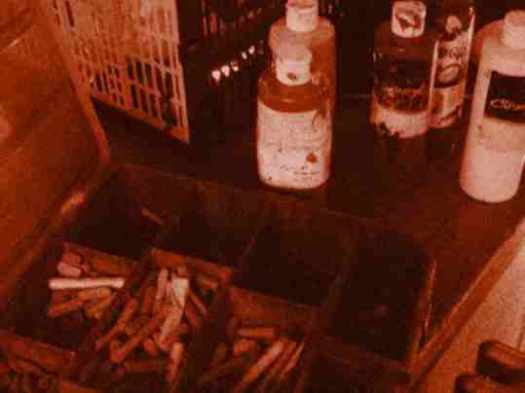I’ve just returned from running my second painting holiday at Auribeau-sur-Siagne in the South of France. I’ll be posting a little more about it in the coming days but while I’ve literally only been home for a few hours I thought it might be nice to put down a few impressions and observations while they’re still fresh in my mind.
Yet again, I was very lucky with the five people, Richard, Karen, Nick, Roberta and Barbara who came along. They were all good fun and thoroughly entertaining company. Quite a few times people remarked how hard I’d worked and whether spending five days with a group of people was a little full-on compared to running the usual two hour sessions that I hold in Bristol. By relaxing and being myself I felt able to give a certain amount of structured tuition but also allow people the freedom to take a break if they felt tired and answer peoples questions when required without feeling as if I was continually “on duty”.
Unlike many painting holidays I had the advantage of knowing most of the group before hand so I had already taught people quite a few basics before the trip began. As time goes on and I get more complete beginners coming along I may change things but for now it makes sense keeping things fairly informal. As well as giving people the chance to paint I felt that it was important for some of the group members to look at a few art galleries and experience some different types of art. At home, it may be difficult or not something they would ordinarily do. So we all trooped up the Boulevard de Cimiez in Nice to see the Matisse and Chagall Museums but also made a trip to Mougins to see some of the galleries by local artists. What a contrast! The big name galleries in Nice were fantastic but the art by the local artists was distinctly variable. I really believe in all artistic expression as long as, of course it harms nobody else but people who come along to the beginners classes are often so very humble and self effacing that I thought it would be good to see a real spread of work from good to indifferent. It’s important to have the right expectations when you visit some of these galleries. Whether you visit the Matisse museum in Nice or the Picasso Museum in Antibes (closed at the moment but apparently reopening over Summer 2008) It’s important to bear in mind that the collections may not be as spectacular as they could be because both artist’s work is fairly widely dispersed. The Matisse had some very choice items from the early part of his career including some of his early copies after Dutch masters and early life drawings even if there happens to be only one of his Nice period odalisques on display. I’m still hoping to get to the Renoir museum at Cagnes-sur-Mer. I know a fair bit about the artist and find the story of his last days painting from a wheel chair incredibly moving but, yet again, I’m led to believe that there aren’t many paintings by the man himself so if you went along expecting to see something along the lines of La Loge or The Boating Party you may well be disappointed. I remember going to Giverney years ago to see Monet’s studio/house where they exhibited some large reproductions of the Waterlillies and, I seem to remember that weird monumental canvas of Turkeys which struck me as a little dumb considering the fact that there were dozens of perfectly good original Monet’s close enough by in Paris and that anyone who was doing the house and gardens would probably be doing the galleries also.
Like most of the museums in this country a lot of the museums have a no photography policy.(Except for the Chagall). The Matisse Museum didn’t seem to have a comprehensive catalogue of images to buy which was a little frustrating as it makes it harder to share some of the images that are on view with you.
I love the old medieval parts of Auribeau and Mougins the best. The streets are so narrow and the houses themselves were all very individual, probably very dark inside but undoubtedly very cool in Summer. I could easily imagine Gerard Depardieu running down the street dressed as Cyrano de Bergerac. I’ve read much over the years concerning the “Hausmanisation” of Paris, the process where all the old medieval streets of Paris were cleared away to be replaced by the wide boulevards of that we know today. Renoir particularly bemoaned it’s loss. I wonder after my trip if some of the streets we saw were a fair representation of the sorts of streets you could have seen in Paris once upon a time. If so, it must have been an amazing city.
I’m currently organising another trip in July which is full but would like to get another one set up for later Summer 2008. The price for five nights will be £200 b+b sharing or £300 for a room to yourself. Obviously at this sort of price I’m not really trying to make a profit and at some point will need to charge more so if you live in the Bristol area and fancy a cheap painting holiday this might be a good opportunity.



















